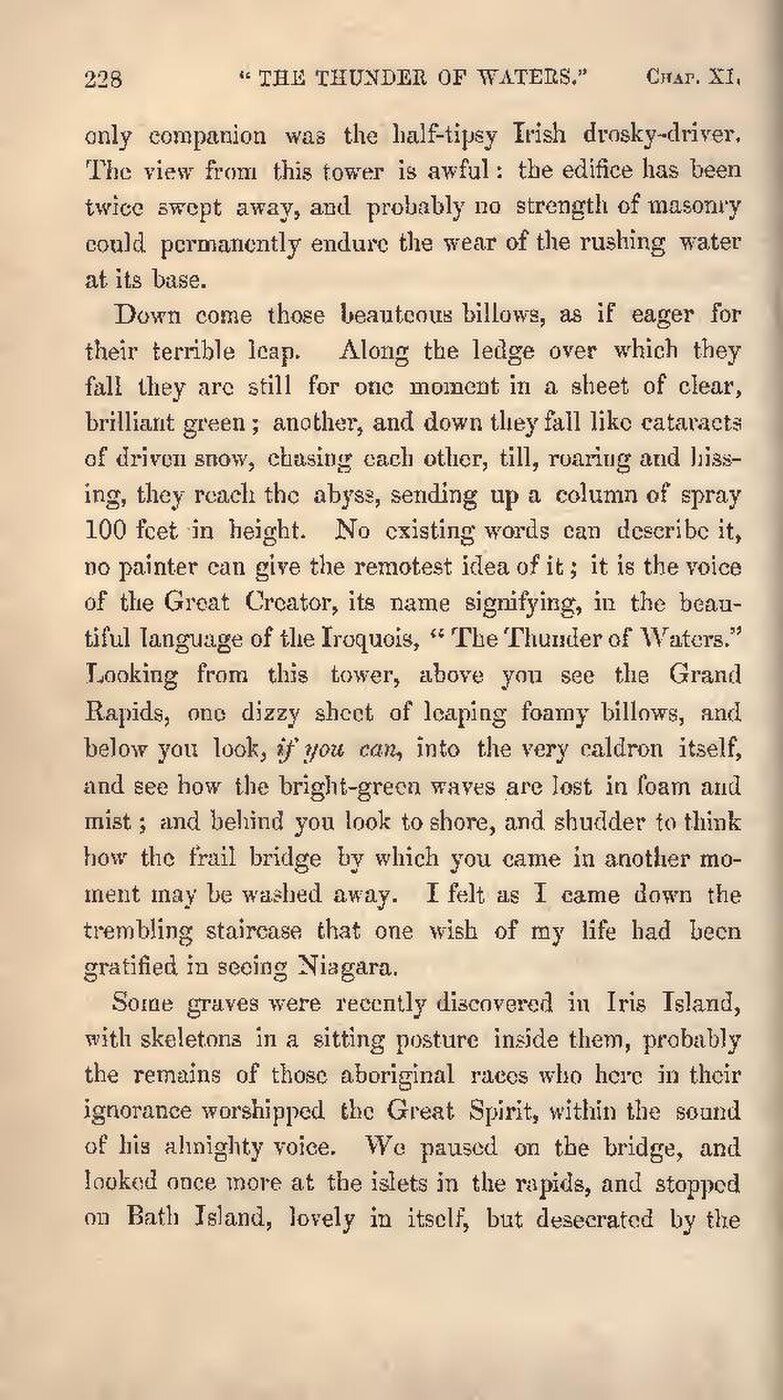only companion was the half-tipsy Irish drosky-driver. The view from this tower is awful: the edifice has been twice swept away, and probably no strength of masonry could permanently endure the wear of the rushing water at its base.
Down come those beauteous billows, as if eager for their terrible leap. Along the ledge over which they fall they are still for one moment in a sheet of clear, brilliant green; another, and down they fall like cataracts of driven snow, chasing each other, till, roaring and hissing, they reach the abyss, sending up a column of spray 100 feet in height. No existing words can describe it, no painter can give the remotest idea of it; it is the voice of the Great Creator, its name signifying, in the beautiful language of the Iroquois, "The Thunder of Waters." Looking from this tower, above you see the Grand Rapids, one dizzy sheet of leaping foamy billows, and below you look, if you can, into the very caldron itself, and see how the bright-green waves are lost in foam and mist; and behind you look to shore, and shudder to think how the frail bridge by which you came in another moment may be washed away. I felt as I came down the trembling staircase that one wish of my life had been gratified in seeing Niagara.
Some graves were recently discovered in Iris Island, with skeletons in a sitting posture inside them, probably the remains of those aboriginal races who here in their ignorance worshipped the Great Spirit, within the sound of his almighty voice. We paused on the bridge, and looked once more at the islets in the rapids, and stopped on Bath Island, lovely in itself, but desecrated by the
